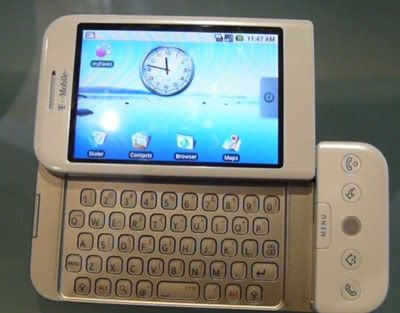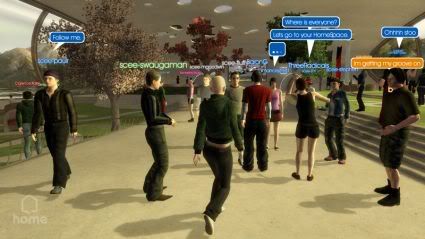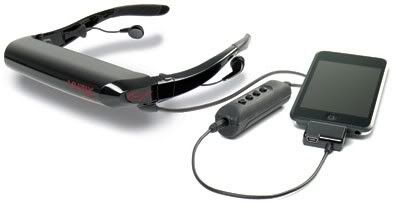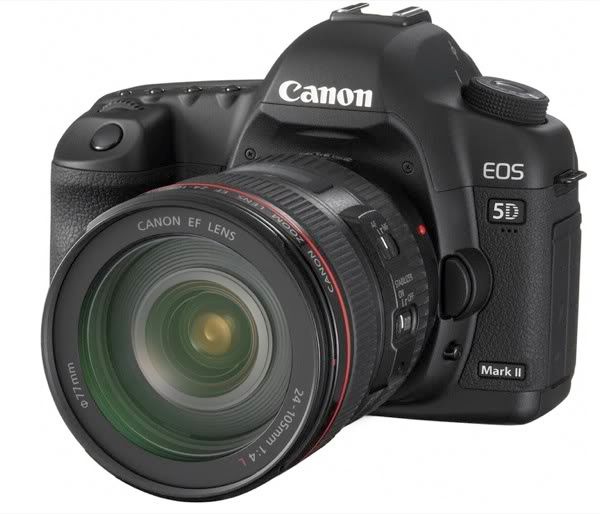
Over 16,561,188 people are on fubar.
What are you waiting for?

 Turn off the rumor mills, pull down the mocked-up artwork, and say goodbye to the blogger speculation. Google and T-Mobile's G1, the first mobile phone built around Google's open-source, Linux-based Android platform, is officially a product.
Before a warm, if not entirely enthusiastic crowd in Manhattan, executives from T-Mobile, HTC and Google (including a surprise appearance by company founders Sergey Brin and Larry Page) officially unveiled the T-Mobile G1.
Listing for $179 with two data plans ($25 and $35), the T-Mobile G1 is available now to existing T-Mobile customers in limited quantities (via T-Mobile's web site) and at all T-Mobile locations by late next month. It will also launch in the U.K. in November, and across all of Europe by early next year.
The G1 is a dual-band HSDPA (1700/2100) and quad-band GSM device.
Built by HTC, the phone features a 320x480 touch screen, a hidden QWERTY keyboard, Wi-Fi, 3G, and an accelerometer. Integrated on the G1's keyboard is a trackball for thumb-based navigation, and a 3-megapixel camera. Finally, there is a dedicated Internet and phone search button, built-in Internet applications and access to thousands of applications via the new Android marketplace.
The G1 is probably most noteworthy for three things: first, it is the market's first official look at Android, a mobile operating system officially developed as part of the company-agnostic Open Handset Alliance platform, but inextricably tied to Google. Second, it allows T-Mobile to boost its own standing, similar to the high-profile launch of Apple's iPhone, which was exclusively tied to AT&T. Finally, the phone might be as close as the market will ever see to a sort of Google PC, where a Google-designed browser is paired with Google mini-applications, or widgets, running on an operating system pioneered by Google.
The marketplace, whose plans Google outlined in August, is perhaps the boldest competitive statement against Apple's increasingly popular iPhone, which offers customers a tightly controlled list of applications via its Apps Store. The difference between the two platforms is Google's pledge to make Android completely open, which Google Founder Sergey Brin demonstrated by explaining that he had already written a G1 app that uses the phone's built-in accelerometer to measure the time it takes the phone to go from being thrown up in the air to hitting the floor. Right now the Android marketplace has only 23 applications and 8 games, although that's sure to grow.
Andy Rubin, senior director of mobile platforms for Google, characterized the platform as "future proof because it has openness built in."
Seeking to position the G1 as a mobile Internet device, Cole Brodman, chief technical officer and innovation officer for T-Mobile, explained that mobile Web adoption in the USA has lagged behind other markets. "Consumers have a desire to connect, but they haven't found the mobile Internet very compelling," Brodman said, adding only 16 percent of U.S. mobile users go online.
However, Brodman characterized the U.S. consumer as having "an appetite for these devices…U.S. consumers over-consume everything. We love that."
"It will appeal to a broad variety of people," HTC's chief executive Peter Chou added.
The assembled executives later admitted, however, that consumers may be the earliest adopters since G1 lacks Exchange server support.
The HTC-built phone offers a handful of unusual interface options, including the ability to access different functions with a "long press". So holding down on, say, a selected photo would allow users to mail that image directly from the phone. Menus and options pop down from the top of the screen using "windowshades."
As you'd expect from a Google-branded device, the G1 is designed to excel at Internet-based tasks. In addition to the dedicated, physical Google search button, the G1 will come with built-in Gmail and a Google Mobile browser. T-Mobile execs called the browser, which uses the Webkit engine, "Chrome Lite".
The G1 comes pre-loaded with Google maps and an innovative "Compass" mode, which lets a user use the phone to essentially preview an intersection from all directions by holding the phone and rotating in the four compass directions. The G1 phone will display the appropriate street-level view images for whichever direction the phone is facing.
While the phone plays YouTube video, it does not capture it.
Unlike many mobile browsers, this one will support multiple browser windows. Similarly, the phone can easily switch you out from browsing the Web to answering a call, executives promised. Instant messaging is built in, including Google Talk, along with support for AIM, MSN Messenger and Yahoo IM. In August, Google said that several features would be cut out of Android, including Google Talk, to allow the phone to make its ship date.
The G1 also includes Wi-Fi and integrates with Amazon's music service. G1 owners will be able to peruse the music store and download song clips over the T-Mobile network. Full song downloads are only available via a Wi-Fi connection. The phone supports DRM-free AAC, MP3s and WMA.
T-Mobile's 3G coverage is admittedly spotty, but Brodman promised that it will expand substantially by the official Oct 22 G1 launch and should be virtually nationwide by November.
Turn off the rumor mills, pull down the mocked-up artwork, and say goodbye to the blogger speculation. Google and T-Mobile's G1, the first mobile phone built around Google's open-source, Linux-based Android platform, is officially a product.
Before a warm, if not entirely enthusiastic crowd in Manhattan, executives from T-Mobile, HTC and Google (including a surprise appearance by company founders Sergey Brin and Larry Page) officially unveiled the T-Mobile G1.
Listing for $179 with two data plans ($25 and $35), the T-Mobile G1 is available now to existing T-Mobile customers in limited quantities (via T-Mobile's web site) and at all T-Mobile locations by late next month. It will also launch in the U.K. in November, and across all of Europe by early next year.
The G1 is a dual-band HSDPA (1700/2100) and quad-band GSM device.
Built by HTC, the phone features a 320x480 touch screen, a hidden QWERTY keyboard, Wi-Fi, 3G, and an accelerometer. Integrated on the G1's keyboard is a trackball for thumb-based navigation, and a 3-megapixel camera. Finally, there is a dedicated Internet and phone search button, built-in Internet applications and access to thousands of applications via the new Android marketplace.
The G1 is probably most noteworthy for three things: first, it is the market's first official look at Android, a mobile operating system officially developed as part of the company-agnostic Open Handset Alliance platform, but inextricably tied to Google. Second, it allows T-Mobile to boost its own standing, similar to the high-profile launch of Apple's iPhone, which was exclusively tied to AT&T. Finally, the phone might be as close as the market will ever see to a sort of Google PC, where a Google-designed browser is paired with Google mini-applications, or widgets, running on an operating system pioneered by Google.
The marketplace, whose plans Google outlined in August, is perhaps the boldest competitive statement against Apple's increasingly popular iPhone, which offers customers a tightly controlled list of applications via its Apps Store. The difference between the two platforms is Google's pledge to make Android completely open, which Google Founder Sergey Brin demonstrated by explaining that he had already written a G1 app that uses the phone's built-in accelerometer to measure the time it takes the phone to go from being thrown up in the air to hitting the floor. Right now the Android marketplace has only 23 applications and 8 games, although that's sure to grow.
Andy Rubin, senior director of mobile platforms for Google, characterized the platform as "future proof because it has openness built in."
Seeking to position the G1 as a mobile Internet device, Cole Brodman, chief technical officer and innovation officer for T-Mobile, explained that mobile Web adoption in the USA has lagged behind other markets. "Consumers have a desire to connect, but they haven't found the mobile Internet very compelling," Brodman said, adding only 16 percent of U.S. mobile users go online.
However, Brodman characterized the U.S. consumer as having "an appetite for these devices…U.S. consumers over-consume everything. We love that."
"It will appeal to a broad variety of people," HTC's chief executive Peter Chou added.
The assembled executives later admitted, however, that consumers may be the earliest adopters since G1 lacks Exchange server support.
The HTC-built phone offers a handful of unusual interface options, including the ability to access different functions with a "long press". So holding down on, say, a selected photo would allow users to mail that image directly from the phone. Menus and options pop down from the top of the screen using "windowshades."
As you'd expect from a Google-branded device, the G1 is designed to excel at Internet-based tasks. In addition to the dedicated, physical Google search button, the G1 will come with built-in Gmail and a Google Mobile browser. T-Mobile execs called the browser, which uses the Webkit engine, "Chrome Lite".
The G1 comes pre-loaded with Google maps and an innovative "Compass" mode, which lets a user use the phone to essentially preview an intersection from all directions by holding the phone and rotating in the four compass directions. The G1 phone will display the appropriate street-level view images for whichever direction the phone is facing.
While the phone plays YouTube video, it does not capture it.
Unlike many mobile browsers, this one will support multiple browser windows. Similarly, the phone can easily switch you out from browsing the Web to answering a call, executives promised. Instant messaging is built in, including Google Talk, along with support for AIM, MSN Messenger and Yahoo IM. In August, Google said that several features would be cut out of Android, including Google Talk, to allow the phone to make its ship date.
The G1 also includes Wi-Fi and integrates with Amazon's music service. G1 owners will be able to peruse the music store and download song clips over the T-Mobile network. Full song downloads are only available via a Wi-Fi connection. The phone supports DRM-free AAC, MP3s and WMA.
T-Mobile's 3G coverage is admittedly spotty, but Brodman promised that it will expand substantially by the official Oct 22 G1 launch and should be virtually nationwide by November.  We've been intrigued by Sony's PlayStation Home concept for, like, ever now, but considering just how long the thing has been delayed, we're trying to avoid any contact with pre-launch fodder in order to keep our hopes low. That being the case, we realize not all of you care to safeguard your hearts in the way we have ours, so we felt it prudent -- nay, necessary -- to pass along PS3 Fanboy's in-depth walkthrough of the service. SCEA's Jack Buser recently took the time to sit down and open up for a marvelous preview of the Plaza, Game Space and lots of other nooks and crannies we're sure you're interested in venturing into. To the read link, we send you. Try not to get lost, okay?
We've been intrigued by Sony's PlayStation Home concept for, like, ever now, but considering just how long the thing has been delayed, we're trying to avoid any contact with pre-launch fodder in order to keep our hopes low. That being the case, we realize not all of you care to safeguard your hearts in the way we have ours, so we felt it prudent -- nay, necessary -- to pass along PS3 Fanboy's in-depth walkthrough of the service. SCEA's Jack Buser recently took the time to sit down and open up for a marvelous preview of the Plaza, Game Space and lots of other nooks and crannies we're sure you're interested in venturing into. To the read link, we send you. Try not to get lost, okay? Following in the dubious footsteps of Creative, ASUS just announced a dedicated videophone all its own. The AiGuru SV1 followup to the voice-only S1, enables virtually unlimited video calls without a computer -- a world's first to get a big thumbs-up from Skype. The SV1 packs an 800 x 600 pixel 7-inch LCD, integrated speaker and mic (or jacks for your own), a VGA-quality webcam, and connects to the Internets over 802.11b/g WiFi or Ethernet. It'll even run off battery for up to 20-minutes if absolutely necessary. Available for pre-order in Europe and North America today for a netbook-priced, $300 beans -- ships in October.
Following in the dubious footsteps of Creative, ASUS just announced a dedicated videophone all its own. The AiGuru SV1 followup to the voice-only S1, enables virtually unlimited video calls without a computer -- a world's first to get a big thumbs-up from Skype. The SV1 packs an 800 x 600 pixel 7-inch LCD, integrated speaker and mic (or jacks for your own), a VGA-quality webcam, and connects to the Internets over 802.11b/g WiFi or Ethernet. It'll even run off battery for up to 20-minutes if absolutely necessary. Available for pre-order in Europe and North America today for a netbook-priced, $300 beans -- ships in October. Although the iWear AV310 Widescreen from Vuzix isn't the first 3D HMD we've come across, or the largest virtual display (likened to a 52' screen viewed from 9-feet), it's the first 16:9 widescreen version to hit the market. Equipped for use with both NTSC and PAL, this unit will run you about $250 and has a mysterious "video" input for use with a wide range of devices, though there's currently nothing to say what style of connector can be used or what resolution it runs at. Oh well... we're still waiting on a headtracking version anyway.
Although the iWear AV310 Widescreen from Vuzix isn't the first 3D HMD we've come across, or the largest virtual display (likened to a 52' screen viewed from 9-feet), it's the first 16:9 widescreen version to hit the market. Equipped for use with both NTSC and PAL, this unit will run you about $250 and has a mysterious "video" input for use with a wide range of devices, though there's currently nothing to say what style of connector can be used or what resolution it runs at. Oh well... we're still waiting on a headtracking version anyway. We figured it was coming, now sure enough, Kodak just let loose a new picture frame based on CMEL's new mass-produced, 7.6-inch OLED panels. Ultra-thin as you'd expect and wireless as you'd hope, the new 800 x 480 pixel Wireless Frame should be ready for the holidays sporting 2GB of internal storage, integrated audio, a 30,000:1 contrast, 180-degree viewing angle, and photo service compatibility with Flickr and others. Unfortunately, it's got a price you'd expect from this nascent display tech: $999. Sparky, had better be worth it.
We figured it was coming, now sure enough, Kodak just let loose a new picture frame based on CMEL's new mass-produced, 7.6-inch OLED panels. Ultra-thin as you'd expect and wireless as you'd hope, the new 800 x 480 pixel Wireless Frame should be ready for the holidays sporting 2GB of internal storage, integrated audio, a 30,000:1 contrast, 180-degree viewing angle, and photo service compatibility with Flickr and others. Unfortunately, it's got a price you'd expect from this nascent display tech: $999. Sparky, had better be worth it. After a brief tease, Canon just got official with its EOS 5D Mark II. The full-frame shooter updates the original 5D introduced back in 2005 with a 24 x 36mm 21.1 megapixel CMOS sensor, DIGIC 4 processor with 14-bit analog-to-digital conversion, and the ability to capture Full HD 1,920 x 1,080 video -- take that Nikon D90 and your paltry 720p. We're talking expanded 50-25,600 ISO range,15-point autofocus with 9 selectable AF points, 3-inch Live View LCD offering 4x the pixels of the original 5D, and a 3.9fps burst for unlimited JPEGs or up to 14 RAW images when using a UDMA CF card.
With regard to video leaked predicted by RED CEO last week, the EOS 5D Mark II captures Full HD video at 30fps as well as VGA / 30fps for the first time on any Canon SLR. Of course, it works with any of Canon's 60 EF lenses (and whatever Carl Zeiss cooks up) for ultra-wide-angle, fish-eye, macro, and super-telephoto videography. Video can be recorded at up to 4GB per clip which is equivalent to about 12 minutes of Full HD video or 24 minutes in VGA. Video clips are recorded in .MOV format using MPEG-4 video compression and linear PCM audio. You can even record with external stereo mics attached to an input terminal.
At the end of November, Canon will sell the body-only for $2,699 or bundled with Canon's 24-105mm f/4L IS USM zoom lens for $3,499. Welcome back to the show Canon, we were starting to worry.
After a brief tease, Canon just got official with its EOS 5D Mark II. The full-frame shooter updates the original 5D introduced back in 2005 with a 24 x 36mm 21.1 megapixel CMOS sensor, DIGIC 4 processor with 14-bit analog-to-digital conversion, and the ability to capture Full HD 1,920 x 1,080 video -- take that Nikon D90 and your paltry 720p. We're talking expanded 50-25,600 ISO range,15-point autofocus with 9 selectable AF points, 3-inch Live View LCD offering 4x the pixels of the original 5D, and a 3.9fps burst for unlimited JPEGs or up to 14 RAW images when using a UDMA CF card.
With regard to video leaked predicted by RED CEO last week, the EOS 5D Mark II captures Full HD video at 30fps as well as VGA / 30fps for the first time on any Canon SLR. Of course, it works with any of Canon's 60 EF lenses (and whatever Carl Zeiss cooks up) for ultra-wide-angle, fish-eye, macro, and super-telephoto videography. Video can be recorded at up to 4GB per clip which is equivalent to about 12 minutes of Full HD video or 24 minutes in VGA. Video clips are recorded in .MOV format using MPEG-4 video compression and linear PCM audio. You can even record with external stereo mics attached to an input terminal.
At the end of November, Canon will sell the body-only for $2,699 or bundled with Canon's 24-105mm f/4L IS USM zoom lens for $3,499. Welcome back to the show Canon, we were starting to worry.